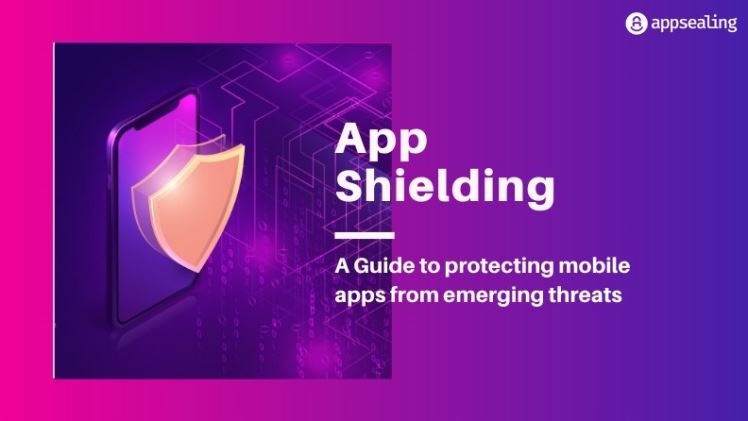The Importance of App Shielding in Mobile Application Security

Mobile application security is of increasing significance in today’s digital landscape due to our increasing reliance on mobile devices and widespread usage of mobile applications (apps). Since mobile apps store user data that may be appealing targets for cybercriminals, app shielding plays an essential part in protecting apps against various threats while guaranteeing integrity, confidentiality and availability of user data. App shielding refers to the practice of employing various security techniques and countermeasures on mobile applications in order to strengthen their resistance to attacks.
Importance of app shielding in mobile application security
- Intellectual Property Protection: Mobile apps often include important intellectual property, including proprietary algorithms, trade secrets, or unique functionality. App shielding helps safeguard this intellectual property by making it difficult for attackers to reverse engineer or decompile the app’s code and extract valuable information. By obfuscating code and adding anti-tampering mechanisms to its codebase, app shielding ensures that its core functionality remains protected and confidential.
- Data Protection: Mobile apps typically store sensitive user data such as personal and financial details, login credentials and other confidential data. By employing advanced methods like encryption, secure storage and secure communication protocols to protect this data from interception, unauthorized access or manipulation by third-parties and prevent data breaches through app shielding techniques such as these, user privacy is kept intact and breaches prevented.
- Preventing Unauthorized Access: Application shielding helps stop unapproved access to its functionality and resources, using techniques such as code obfuscation, anti-debugging mechanisms, and runtime application self-protection (RASP) which deter attackers from gaining unintended entry or altering it during runtime. These measures make it more difficult for attackers to exploit vulnerabilities within apps or perform illegal actions within them.
- Mitigating Reverse Engineering: App shielding techniques can significantly impede reverse engineering of mobile apps by applying code obfuscation, encryption and anti-tampering mechanisms that make it hard for attackers to understand the code logic, extract sensitive data or modify its behavior – protecting intellectual property theft, illegal modifications and creation of counterfeit apps or malicious clones or counterfeit apps.
- Detection and Response: App shielding solutions include runtime monitoring and detection mechanisms that enable rapid identification of suspicious behavior or security breaches within an app. By providing real-time threat intelligence and anomaly detection capabilities, app shielding solutions can alert developers or security teams quickly of potential attacks allowing for timely mitigation action to take place and mitigating actions to be taken promptly.
Benefits of App Shielding and Appsealing
App shielding (sometimes known as app hardening or app protection ) involves applying various security measures to mobile applications to protect them against threats. Appsealing provides comprehensive app shielding capabilities.
- Code Protection: Appsealing uses code obfuscation techniques to make an app’s code hard for an unauthorized third-party to understand or reverse engineer, thus safeguarding intellectual property and sensitive logic contained within. This protects its IP and reduces risks such as code theft or tampering.
- Anti-Tampering Mechanisms: App shielding solutions typically incorporate anti-tampering measures that detect and block modifications to an application’s code or resources, making it challenging for attackers to alter its behavior, introduce malicious code into it or alter vital functionalities thereby increasing overall app security.
- Runtime Application Self-Protection (RASP): App shielding solutions like Appsealing provide RASP as an essential feature, allowing real-time monitoring and protection of apps during runtime. RASP detects and blocks malicious activities or abnormal behavior within apps to provide an extra line of defense against potential attacks such as code injection, hooking or API abuse.
- Secure Data Storage: App shielding solutions often feature secure data storage capabilities that ensure sensitive user credentials or encryption keys stored locally on devices are encrypted to prevent unintended access by malicious individuals, even if compromised devices or apps access these storage areas directly. This helps safeguard user data in case an app’s storage area becomes targeted for theft.
- Secure Communication: Appsealing and similar solutions provide secure communications between mobile apps and servers, using encryption protocols and SSL pinning to prevent data interception, man-in-the-middle attacks and other forms of network-based attacks from reaching sensitive information that is transmitted between these two points. Consequently, sensitive information that passes between app and server remains safe from unwarranted disruption or compromise.
- Threat Detection and Response: App shielding tools usually include advanced threat detection capabilities. They monitor an app’s behavior to identify suspicious activities, generate alerts or reports on these incidents, and send out notifications or reports immediately – helping developers or security teams respond promptly to potential security incidents, investigate anomalies and mitigate attacks thereby improving its overall security posture.
- Compliance with Regulations: App shielding solutions can assist organizations in meeting regulatory and data protection standards. By implementing security controls and encryption mechanisms, they help organizations comply with regulations like GDPR or CCPA as well as industry-specific security standards, ensuring user data is managed in an ethical and compliant way.
- Ease of Integration: Appsealing’s app shielding solutions are designed to fit seamlessly into the app development process, providing software development kits (SDKs) that can easily integrate with an app without much additional work, allowing developers to focus on its functionality while taking advantage of robust security features provided by Appsealing’s shielding solution.
Key features of application shielding
Application shielding is typically used to guard mobile programs, computing device software, internet programs, and other types of software.
- Code Obfuscation: This method entails reworking the utility’s supply code or binary right into a more complex and convoluted form, making it difficult for attackers to recognize an opposite engineer. By renaming variables, placing fake code, and changing manipulated glide, code obfuscation makes the utility tougher to decipher.
- Encryption: Sensitive records in the software are frequently encrypted to save you from unauthorized entry. Encryption ensures that even though an attacker gains right of entry to the utility’s files or reminiscence, the information remains unreadable without the correct decryption keys.
- Anti-Tampering Techniques: Application shielding employs diverse strategies to detect and prevent tampering attempts at the utility’s code and assets. These techniques can include integrity checks, checksum verification, and anti-debugging measures.
Conclusion
App shielding is an integral component of mobile application security, providing multiple layers of protection to shield mobile apps against threats such as reverse engineering, tampering, unauthorized access and data breaches. Appsealing provides comprehensive security measures as well as numerous advantages. Appsealing and similar solutions enable real-time monitoring and threat detection, enabling organizations to quickly respond to security incidents, mitigate attacks, enhance overall security, comply with data protection regulations and industry standards and ensure user data is handled securely according to legal requirements.
Please enter a value for each field below.




